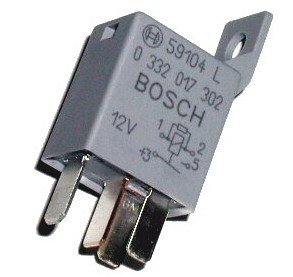ducttapeandzipties
New member
- Joined
- May 22, 2013
The car in question is an 89 240 DL non turbo.
I replaced the pulley driven fan with an electric one and wired a thermostatic switch with a relay to control it. That was about four months ago, and I am about to install switch number three because they keep failing. They seem to trip gradually at a higher and higher temperature until the temp gauge is up into the red. I though maybe my gauge sender was acting up, but when I replace the aftermarket switch, it functions fine.
I have a 1" x 1/2" x 1" copper tee with a 3/8" npt adapter soldered together with a spade terminal soldered onto it to ground the tee. I have this in the lower rad hose, with the switch threaded into it. I have a relay and everything will work fine for a month or so and then it temp it switches at starts creeping up. I have a light so I know if there is power going to the fan or not. The light feeds off of the fan so the only thing the thermo switch is powering is the coil on the relay, which was supplied with the first switch I bought. The fan is from another model Volvo, I cant remember which one I pulled it from. It has a low speed and high wire, I am only using the low speed wire, which has provided ample cooling. If I bypass the switch and let it run whenever the ignition is on, I have no overheating problems.
I cut the last switch open to see if I could learn anything. I did not see anything that would cause the problem. It appears the contacts are pushed together by a shaft that is in turn pushed by a bi-metallic diaphragm. It is a 200 on 185 off switch, and I have a 195 degree thermostat. Battery and charging voltage reads normal. Alternator is a year old and I have a volt gauge on the dash, so I have a pretty good idea of what the alt is putting out at all times.
I have been getting my switches from the same retailer on ebay, they sent the first replacement one free. I thought maybe they were poor quality, bad batch, etc. but several reviewers on summitracing.com are having the same problem as me. Does anybody have a clue why these switches keep failing?
http://www.ebay.com/itm/131387544433?_trksid=p2060353.m2749.l2649&ssPageName=STRK:MEBIDX:IT

I replaced the pulley driven fan with an electric one and wired a thermostatic switch with a relay to control it. That was about four months ago, and I am about to install switch number three because they keep failing. They seem to trip gradually at a higher and higher temperature until the temp gauge is up into the red. I though maybe my gauge sender was acting up, but when I replace the aftermarket switch, it functions fine.
I have a 1" x 1/2" x 1" copper tee with a 3/8" npt adapter soldered together with a spade terminal soldered onto it to ground the tee. I have this in the lower rad hose, with the switch threaded into it. I have a relay and everything will work fine for a month or so and then it temp it switches at starts creeping up. I have a light so I know if there is power going to the fan or not. The light feeds off of the fan so the only thing the thermo switch is powering is the coil on the relay, which was supplied with the first switch I bought. The fan is from another model Volvo, I cant remember which one I pulled it from. It has a low speed and high wire, I am only using the low speed wire, which has provided ample cooling. If I bypass the switch and let it run whenever the ignition is on, I have no overheating problems.
I cut the last switch open to see if I could learn anything. I did not see anything that would cause the problem. It appears the contacts are pushed together by a shaft that is in turn pushed by a bi-metallic diaphragm. It is a 200 on 185 off switch, and I have a 195 degree thermostat. Battery and charging voltage reads normal. Alternator is a year old and I have a volt gauge on the dash, so I have a pretty good idea of what the alt is putting out at all times.
I have been getting my switches from the same retailer on ebay, they sent the first replacement one free. I thought maybe they were poor quality, bad batch, etc. but several reviewers on summitracing.com are having the same problem as me. Does anybody have a clue why these switches keep failing?
http://www.ebay.com/itm/131387544433?_trksid=p2060353.m2749.l2649&ssPageName=STRK:MEBIDX:IT

Last edited:





